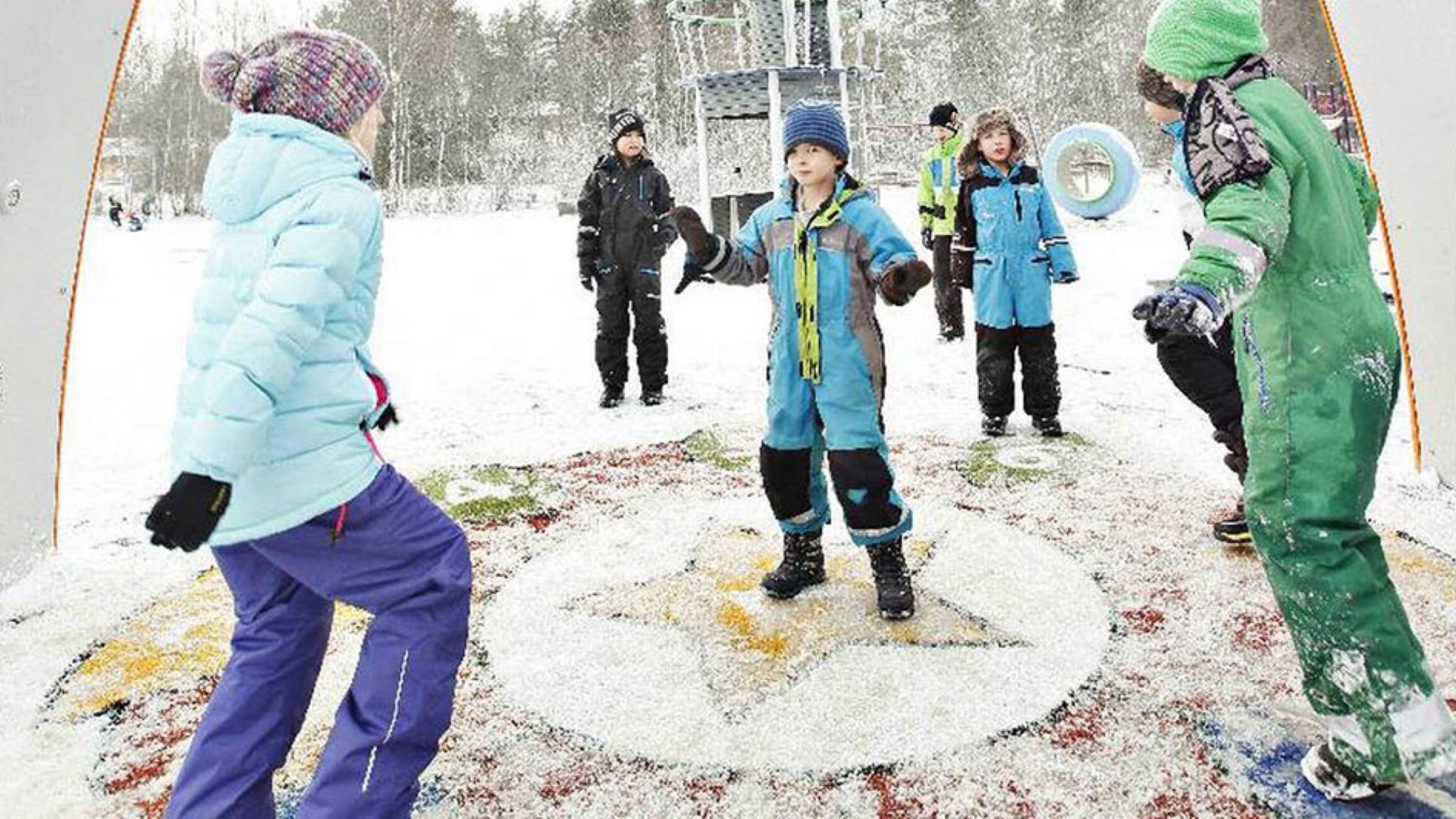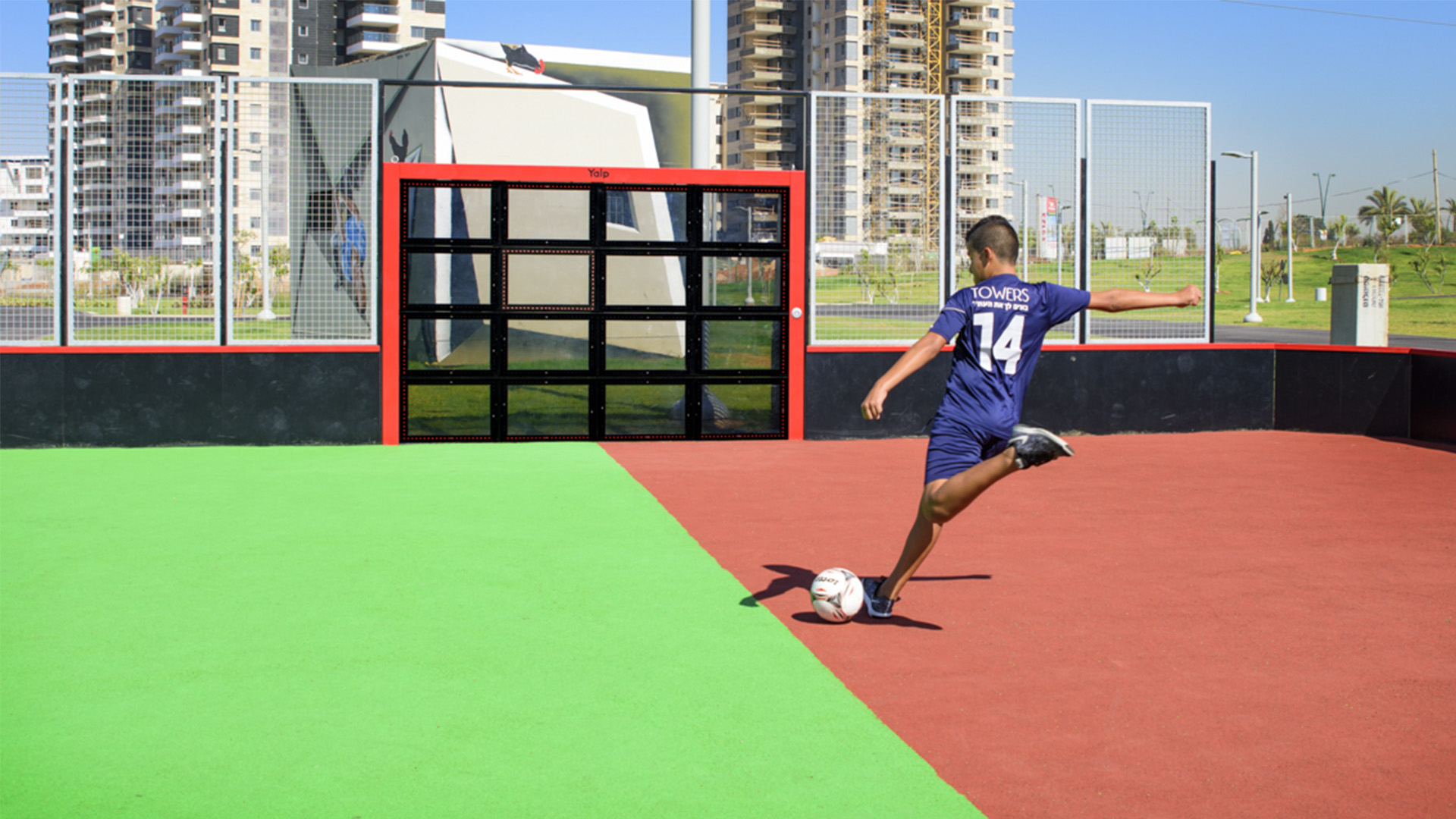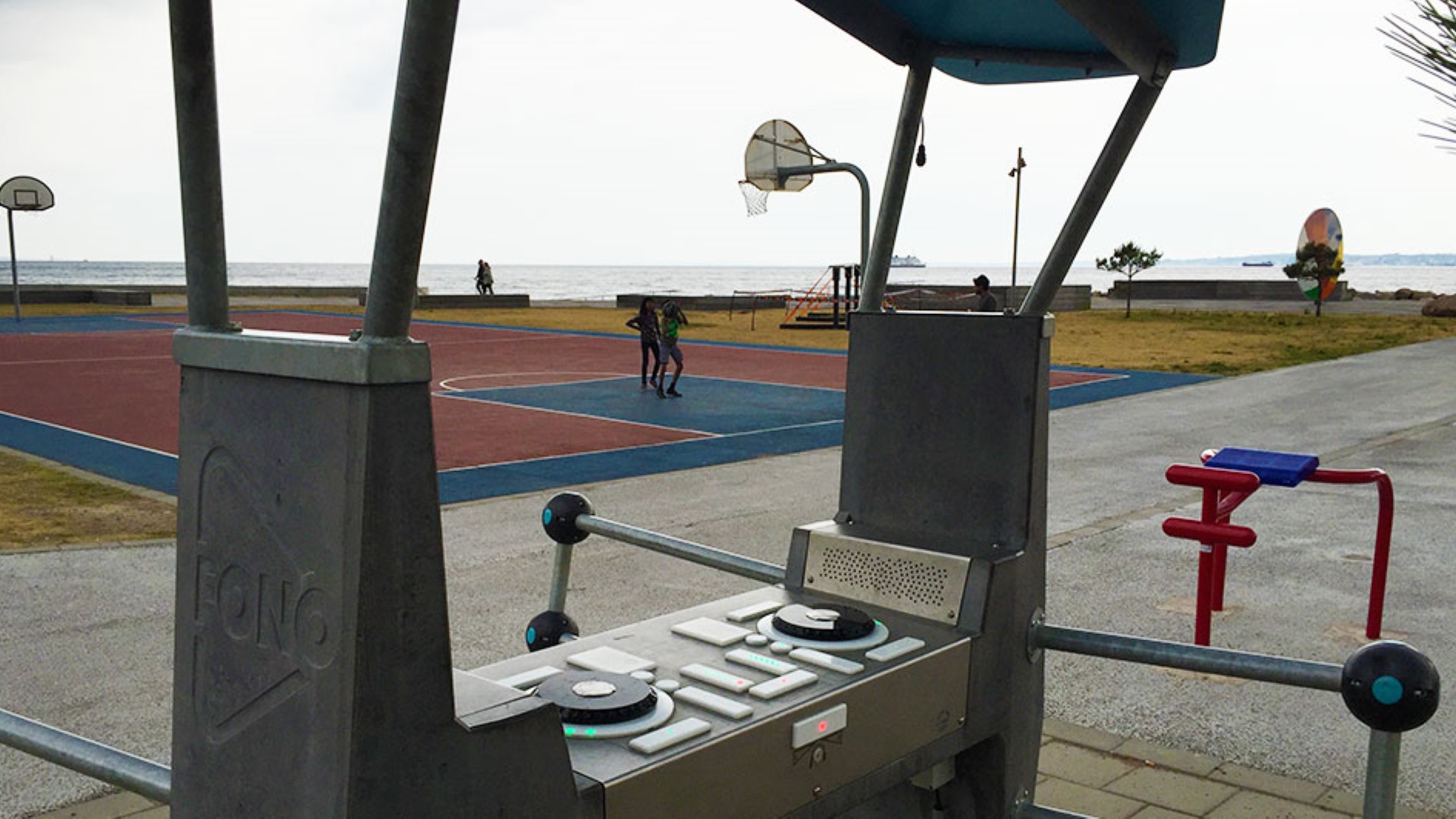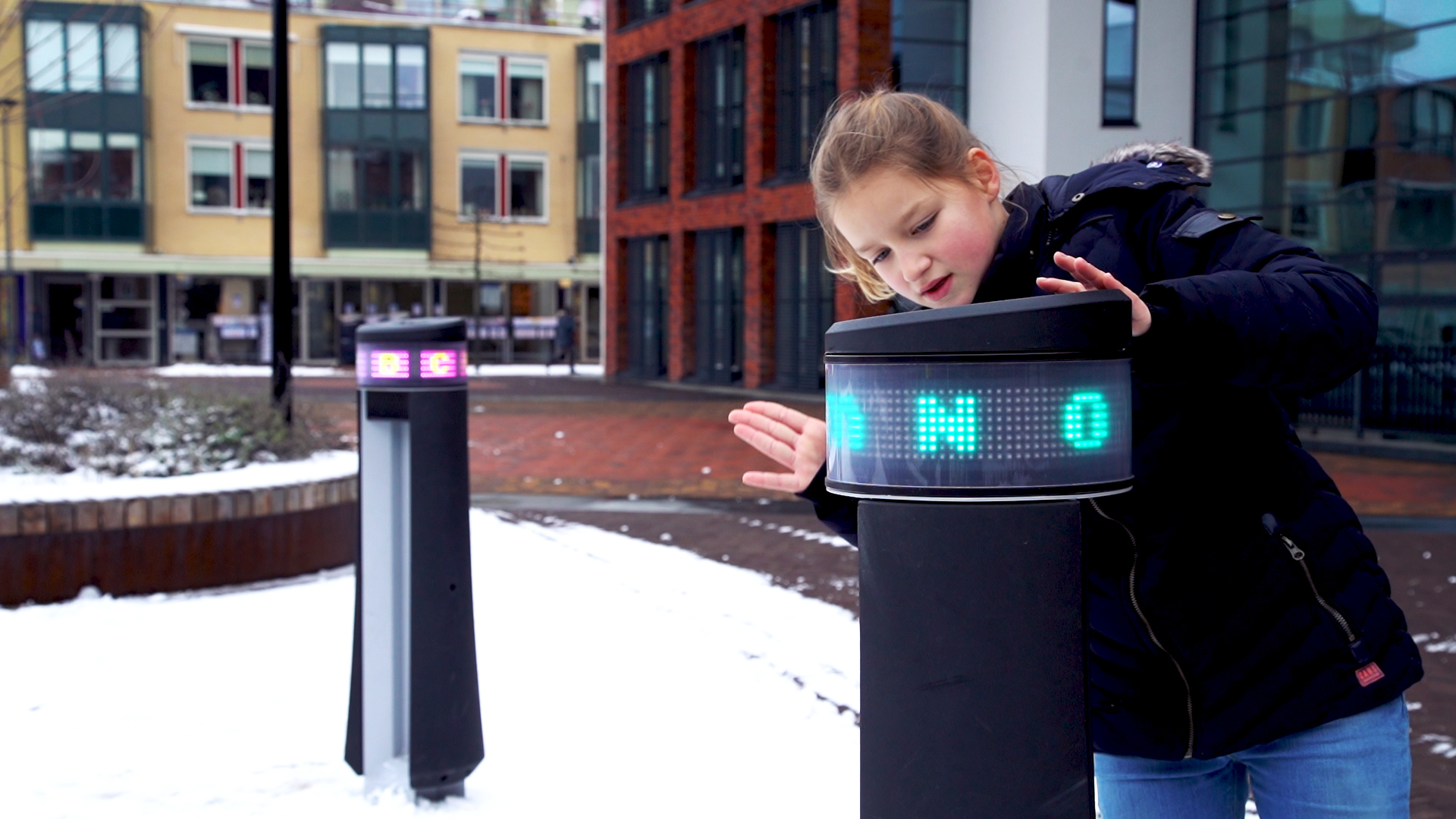International testing and certification
Lappset Interactive playsets use advanced technology to guarantee safety and durability. These playsets go through detailed certification processes conducted by accredited experts to meet top international safety standards. This involves thorough checks for falling heights, entrapment risks, and other possible dangers.
While we prioritize traditional safety measures, we also address electronic safety for our playsets. We believe in obtaining the appropriate certificates to ensure thorough testing, approval, and overall safety assurance.
Our playsets are designed for efficiency and reliability, lasting for years in various climates worldwide. Since 2021, we have installed over 1,000 playsets that perform well in extreme conditions, from Scandinavia's cold to Asia's heat and humidity. The Lappset safety certificates are easily accessible on our download page.
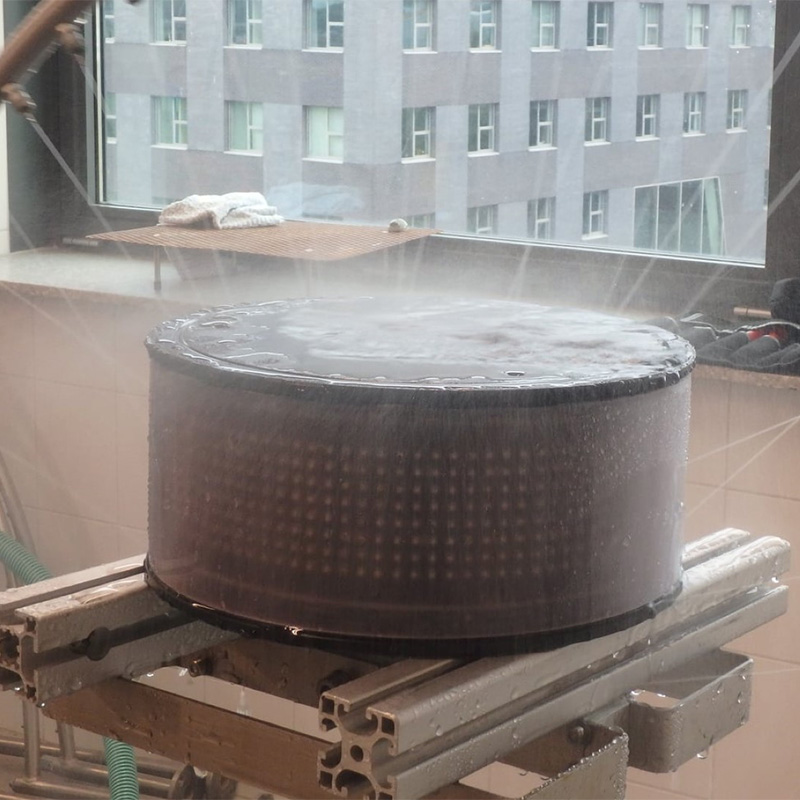
The Lappset Memo Interactive play pillars are tested at Dekra. The Netherlands
International certification partners
We follow international certification protocols to ensure our products meet global quality standards for electrical safety, electromagnetic compatibility, and playground safety. Our products have received IECEE CB Scheme certificates, showing that they meet strict standards. Dekra helps with the certification process as the Dutch National Certification Body (NCB), ensuring thorough evaluation. Dekra is our testing organization in the Netherlands, and all Lappset Interactive playground equipment undergoes rigorous testing for ingress protection, achieving an IP54 rating.
To meet the standards in the USA and Canada, our products are tested by Eurofins MET Labs, a leading United States NCB. This results in the cMETus and FCC marks being placed on our product labels. Similarly, we ensure that our products meet the standards in Australia and New Zealand by undergoing verification under the Standards Australia (SA) scope, earning us the Regulatory Compliance Mark (RCM) on our product labels.
Our international standards Electrical safety
IEC 62368-1 (International) + CB Scheme. The IEC62368 (Europe: EN62368) ensures our electronic products are safe. Our interactive products comply with the international audio/video, information, and communication technology equipment standard – part 1: safety requirements. This covers the safety of the electrical system broadly, including testing for water and dust hazards (IP rating), fire safety, and simulations of more hazardous circumstances during rough testing. Our interactive play sets are compliant with:
- IEC 62368-1:2014 (International, electrical safety)
- IEC 62368-1:2018
- IEC 62368-1:2020+A11:2020
- National Deviations:
- CSA/UL 62368-1:2019
- IEC 60950-22:2016 (International, electrical safety), for countries that have not yet applied the IEC 62368-1 (Israel, among others).
Electromagnetic Compatibility
Electromagnetic Compatibility (EMC) & Radio Frequency (RF) & RSM (Radio Spectrum Matters) approval makes sure our electronic products do not bother and are not bothered by other electronic products in the field. All our interactive play sets comply with:
- EN55032:2015 (Emission requirements)
- EN55035:2017 (Immunity requirements)
- EN55016-2-1 (Conducted disturbance)
- EN 55016-5-3 (Radiated electromagnetic disturbances)
- EN 61000-2-3:2014 (Harmonic current emissions)
- EN 61000-3-3:2013 (Voltage changes, voltage fluctuations and flicker)
- EN 61000-4-2 (Electrostatic discharge)
- EN 61000-4-3 (Radio-frequency electromagnetic fields)
- EN 61000-4-4 (Fast transients)
- EN 61000-4-5 (Surge transient)
- EN 61000-4-6 (Injected currents)
- EN 6100-4-11 (Voltage dips and short interruptions)
- FCC Rules and Regulations 47 CFR Chapter 1. Part 15 Subpart B (EMC)
- ICES-003 Issue 7 (EMC)
- ETSI EN 301 489-52 V 1.2.1 (EMC)
- ETSI EN 301 489-1 V2.2.3 (EMC)
- ETSI EN 301 908-1 V13.1.1 (RSM, cellular networks)
- ETSI EN 301 511 V12.5.1 (RSM, mobile communications)
- EN 62311:2022 (RSM, RF exposure)

Playground safety
EN 1176-1:2017 + EN 1176-7:2008 makes sure our products are safe to play in a general sense.
The European playground standard EN1176 covers safety concerns for public playgrounds. It includes inspections for various hazards such as fall height, entrapment, sharp edges, construction stability, and maintenance. Additionally, EN1176-7:2008 addresses product installation, checks, maintenance, and use.
The Keurmerkinstituut (Certification Institute), an official accredited certification institute in the Netherlands, tests the play sets.
Vandalism and weather
Next to all international standards, we firmly believe we should test our equipment ourselves and choose high-quality materials, where we get inspiration from the maritime, military, and other high-end solutions. We do this to reduce the chance of damage due to harsh weather conditions or vandalism and other unintended use.
For instance, the Lappset Sutu Interactive ball wall's transparent panels are made of 15mm thick polycarbonate. The same material the police force uses in their safety shields. We tested the durability of the panels and found them to be able to withstand a 50kg weight dropped a thousand times on their centre without any damage, per the EN 15312 sports surrounds directive.
The metal parts are hot-dip galvanized and powder-coated stainless steel, providing the ultimate protection against extreme weather conditions and vandalism thanks to reliable and well-known industry processes.
The product electronics underwent a temperature test called the HALT test (Highly Accelerated Life Test, also used in the automotive industry) and have proven to withstand temperature differences of -35°C until +85°C. (-31°F, +185°F). The products are fully functional in operating temperatures of -20°C to +40°C. (-4°F and 104°F). As of 2020, we have delivered over 870 interactive playground equipment worldwide, of which more than 140 are in Scandinavian countries where temperatures can drop easily below -20°C (-4°F)
Unable to load content.
Click here to open consent window
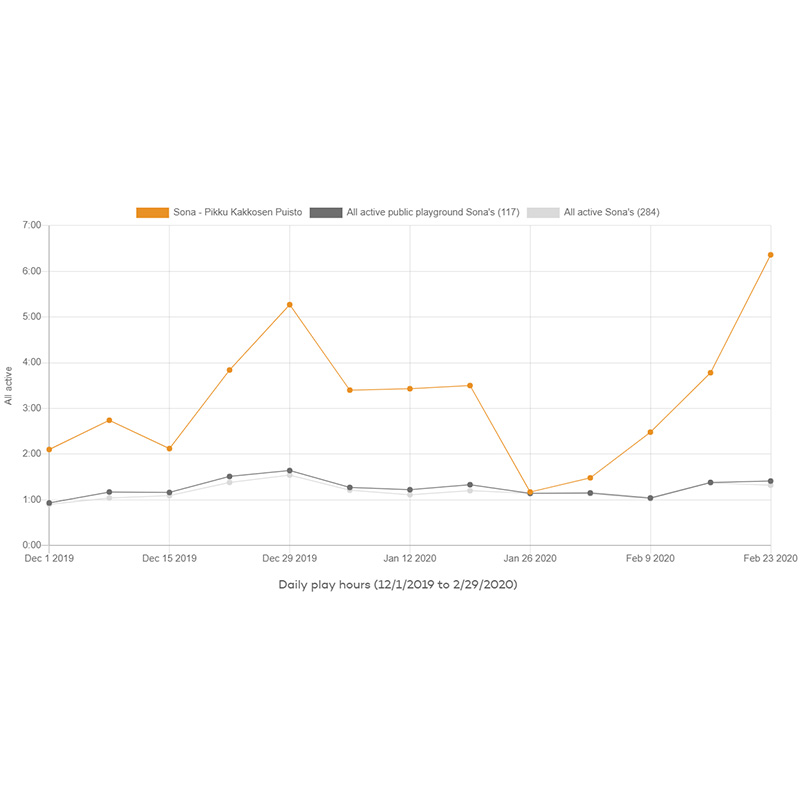
Sona snow fun in Tampere Finland
The Lappset Sona Interactive dance and play arch in Tampere, Finland, proves that the climate does not influence the product's operation. The Sona is in Pikku Kakkosen Puisto, the most popular public playground in Tampere, the third biggest city in Finland. During the coldest season, in December, January, February, and March, temperatures can drop below -10 ℃ (-50 ℉), and there is a lot of snowfall. Although this does not affect the product's operation, the added snow will take your fun to the next level! As the online play statistics show, the Sona in Tampere is played throughout the year. During the warmer periods of the year, over 40 hours a week and a little less during winter, but still 3 hours on average a day.
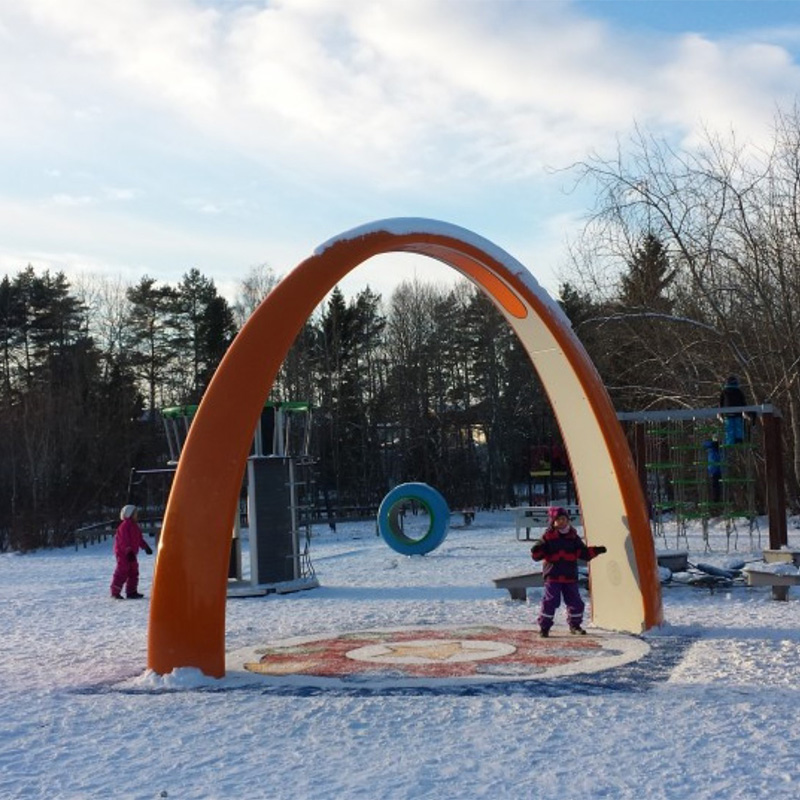
Playing in the snow under the Sona
Sona at Bergvretenskolan in Enkoping Sweden
Bergvretenskolan is a school in Enkopig that offers inspiration, dedication, and a challenging and exciting learning environment. The Sona adds to this, providing an outdoor interactive, playful learning facility and a prominent place in the schoolyard. Sweden is known for its cold winters. In the coldest months, temperatures can drop below -5 ℃ (-50 ℉). But that does not spoil the fun. Statistics show that even in January, the coldest month, people use the Sona for more than 10 hours a week, 2 hours each school day.
